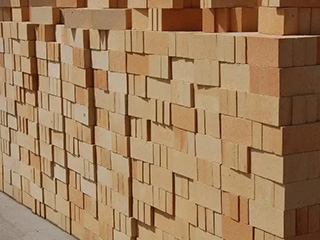Fireclay bricks are one of the most common types of refractory bricks used in various industrial applications due to their excellent thermal properties and resistance to high temperatures. These bricks are made of a combination of clay and other materials, which are then fired at high temperatures to create a hard, durable material that can withstand extreme conditions.
When it comes to choosing the right fireclay brick for your industrial needs, there are several factors to consider. In this article, we will discuss the different types of fireclay bricks available, their properties, and how to select the right one for your specific application.
Types of Fireclay Bricks
There are several types of fireclay bricks available in the market, each with its own unique properties and characteristics. Some of the most common types of fireclay bricks include:
1. High Alumina Fireclay Bricks: These bricks are made of high alumina content and are known for their excellent thermal shock resistance and high compressive strength. They are ideal for use in high-temperature applications such as furnaces, kilns, and boilers.
2. Low Creep Fireclay Bricks: These bricks are specially designed to resist deformation at high temperatures, making them ideal for use in areas where there is a lot of thermal stress. They are commonly used in the construction of refractory linings in glass and cement kilns.
3. Insulating Fireclay Bricks: These bricks are made of low-density materials and are designed to provide excellent insulation properties. They are commonly used in the construction of kiln linings, furnace walls, and other areas where heat retention is essential.
4. Acid-Resistant Fireclay Bricks: These bricks are made of materials that can resist acidic environments and are ideal for use in applications such as acid plants, fertilizer production, and petrochemical plants.

Properties to Consider
When choosing the right fireclay brick for your industrial needs, there are several properties to consider. Some of the most important properties include:
1. Thermal Conductivity: This refers to the ability of the brick to conduct heat. A lower thermal conductivity is ideal for applications where heat retention is essential.
2. Thermal Expansion: This refers to the ability of the brick to expand and contract with changes in temperature. A low thermal expansion is ideal for applications where there is a lot of thermal stress.
3. Compressive Strength: This refers to the amount of force the brick can withstand before it starts to deform or break. A higher compressive strength is ideal for applications where the brick will be subjected to a lot of pressure.
4. Chemical Composition: The chemical composition of the brick will determine its resistance to different types of chemicals and environments. It is essential to choose a brick with the appropriate chemical composition for your specific application.
5. Abrasion Resistance: This refers to the ability of the brick to resist wear and tear caused by friction. A higher abrasion resistance is ideal for applications where the brick will be subjected to a lot of wear and tear.
Selecting the Right Fireclay Brick for Your Application
When selecting the right fireclay brick for your application, it is essential to consider the specific requirements of your project. Some of the factors to consider include:
1. Temperature Range: It is important to choose a brick that can withstand the temperatures of your application without degrading or breaking down.
2. Chemical Environment: The chemical environment of your application will determine the type of fireclay brick you need. For example, if you are working in an acidic environment, you will need an acid-resistant fireclay brick.
3. Thermal Stress: If your application involves a lot of thermal stress, it is important to choose a brick with a low thermal expansion.
4. Mechanical Stress: If your application involves a lot of mechanical stress, it is important to choose a brick with a high compressive strength and abrasion resistance.
5. Insulation Requirements: If your application requires insulation, you will need to choose an insulating fireclay brick with a low thermal conductivity.
6. Size and Shape: The size and shape of the brick should be compatible with your application. Some applications may require custom-shaped bricks or bricks of a specific size.
7.Cost: The cost of the fireclay brick should also be considered. While high-quality bricks may be more expensive, they may provide better long-term value due to their durability and resistance to wear and tear.
Conclusion
Choosing the right fireclay brick for your industrial needs is essential for ensuring the longevity and effectiveness of your project. By considering the specific requirements of your application and the properties of different types of fireclay bricks, you can select a brick that is best suited to your needs. Whether you are building a furnace, kiln, or boiler, choosing the right fireclay brick is a crucial step in the construction process.
Contact: Mgr. Han
Phone: 0086-13589497465
Email: 1255953279@qq.com
Add: Industrial Area of Lingzi Town,Zichuan District,Zibo City, Shandong,China